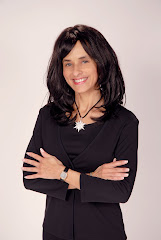
Here is an article that reinforces the notion that the most equal societies are the healthiest.
Surprise! Income Inequality Bad for Your Health. And the Nation's by Meteor Blades
We all know what inequality in wealth and income means when it comes to political clout. And for weathering economic adversity. And for the kind of lifelong head start or hold back that can be given to offspring. The effects are gigantic and extend everywhere. In more economically equal societies, as British epidemiologists Richard Wilkinson and Kate Pickett point out in their new book, The Spirit Level: Why Greater Equality Makes Societies Stronger, people do better on every metric, much better, whether it’s drug addiction, teen pregnancies, homicide or life-span.
What possible good can come from epidemiologists poking around in economics, and in the United States, well outside their usual scholarly arenas? Quite a lot, writes Sam Pizzigati, a senior fellow at the Institute for Policy Studies and proprietor of the on-line web-site Too Much:
"If you want to know why one country does better or worse than another," as Wilkinson and Pickett note simply, "the first thing to look at is the extent of inequality."
The United States, the developed world’s most unequal major nation, ranks at or near the bottom on every quality-of-life indicator that Wilkinson and Pickett examine. Portugal and the UK, nations with levels of inequality that rival the United States, rank near that same bottom.
Japan and the Scandinavian nations, the world’s most equal major developed nations, show the exact opposite trend line. They all rank, on yardstick after yardstick, at or near the top.
And we see the same pattern within the United States. America’s most equal states — New Hampshire, Minnesota, North Dakota, and Vermont — all consistently outperform the least equal, states like Mississippi and Alabama.
People in more equal societies simply live longer, healthier, and happier lives than people in more unequal societies. And not just poor people in these societies, Wilkinson and Pickett emphasize continually, but all people.
If you have a middle class income in an unequal society, you’re going to be more stressed and less healthy — mentally and physically — than someone with the same income in a more equal society.
Earlier this month the congressional Joint Committee on Taxation calculated that about one million taxpayers will have an income of more than $500,000 this year. They will collect $200 billion more in income than the 80 million American taxpayers who make $40,000 or less. Not surprisingly, executives
executives at the top corporations figure prominently in that elite group of a million.
According to economist Emmanuel Saez, who has made a career of studying the impact of income inequality, in 2007, the most recent year for which we have full data, the ratio of CEO pay to the average paycheck was 344 to one. Because of the recession, it’s estimated that the ratio will decrease to 317 to one in 2010. In the 1960s, ‘70s and ‘80s, the average ratio fluctuated between 30 and 40 to one.
The slight decrease in inequality we’ve seen during the Great Recession will be only temporary unless significant changes in regulations and progressive taxation are imposed. And that won’t be easy given the brainwashing visited on America by right-wing think-tanks that have propagandized us for three decades with soothing talk about the benefits of deregulation, privatization and what Pizzigati so aptly calls "wealth worship."
Just how bad the trend has been over the past 30 years can be seen by comparing with an earlier era:
• In 1955, tax records showed that the 400 richest people in the U.S. were worth an average $12.6 million (adjusted for inflation). In 2006, the 400 richest were worth $263 million.
• In 1955, the richest Americans paid an average of 51.2% of their income in taxes under a system with a top rate of 90%, but with lots of loopholes. By 2006, the top tier paid 17.2% of their incomes.
• At the same time, wages for most Americans stagnated from 1979 to 1998and by 2000 the median male wage was below the 1979 level, despite productivity increases of 44.5 percent. Between 2002-2004, two years of the "jobless recovery," the inflation-adjusted median household income declined $1669 a year.
• To cover this loss, households in the aggregate boosted their credit-card debt 315% between 1989 and 2006.
"Over the past 30 years, the income of the top 1%, adjusted for inflation, doubled: the top one-tenth of 1% tripled, and the one-one-hundredth quadrupled," says Pizzigati. "Meanwhile, the average income of the bottom 90% has gone down slightly. This is a stunning transformation."
Inevitably, any attempt to curb executive compensation will be decried as class warfare, that all-purpose charge never invoked by the powers-that-be when we’re talking about the destruction of poor and middle-class Americans. Reversing the inequality ratio by means of regulation and progressive taxation, however, will not only help curtail the risky behavior that ran the economy into the ground, it will be healthier at every level for our entire society, even those now pulling down those 11-digit compensation packages. That makes it not only the wise thing to do, but patriotic as well.
Fri Jan 29, 2010 at 09:29:33 PM PST














.jpg)
.jpg)



